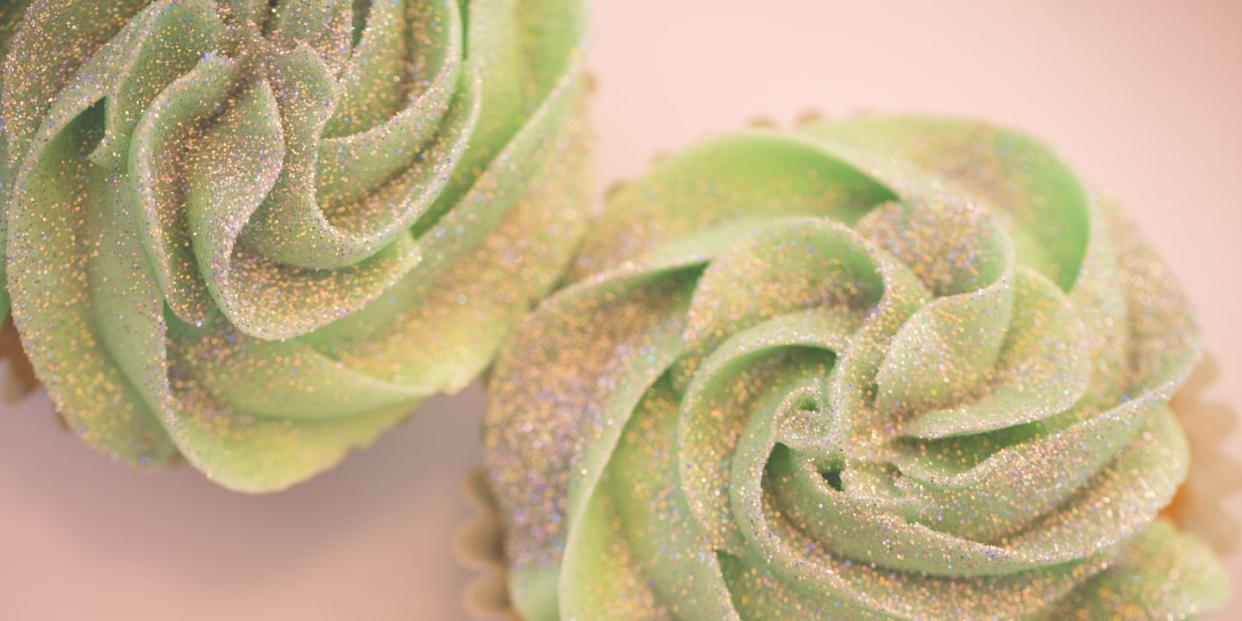The 5 Best Ideas For Food Coloring, Because There Are So Many More Than Just Liquid Dye

Sure, you've used plenty of "regular" food coloring in your life, but did you know there's more to the food coloring world than that plain old stuff? Voilà-all your options.
Liquid Dye
Liquid dye is what you think of when you imagine traditional food coloring. It's a simple synthetic dye with a water base, so it's both inexpensive and light-weight. Basically, if you're trying to color a gigantic, 12-tiered cake, you're going to need several bottles of the stuff. If you're looking for a pretty pastel cupcake, you'll be fine with just the one. Liquid dye is sold in little plastic squeeze bottles and is considered to be the least intense of all the food coloring options.
Liquid Gel Dye
This stuff is super similar to its predecessor, except instead of being a synthetic dye and water, it's a combination of dye, water, corn syrup, and/or glycerin. The latter two combos create a thicker gel-like texture. That means the coloring is more concentrated, and while liquid gel dye is sold in similar bottles to traditional dye, it requires a lot less liquid to get the color you're going for. A few drops max!
Gel Paste Dye
Gel paste dye is what you might know as icing color. It's made of the same dye, water, corn syrup and/or glycerin formula as liquid gel dye, but it's much thicker and even more concentrated. Not only is this option a bit harder to find (you might have to go to a specialty store to find it), but it's also not the right option for amateur bakers. Professionals know it's harder to work this coloring into dough because of its harder texture. That said, it provides COLOR.
Powdered Dye
As advertised, powdered dye is straight powder-just synthetic dye, no liquid base component. It's sold in small jars and should be used in pinches, as, once again, it's extremely potent. Use powder when you're working with something that can't afford any more liquid components: macarons, meringues, etc.
Natural Food Coloring
Natural food colorings are, of course, made from plant sources-no glycerin or corn syrup to be found. It's a more expensive option than most (and the least brilliant of all these options), but it also allows people who are allergic to other dyes to enjoy what they might not be able to normally.
('You Might Also Like',)
